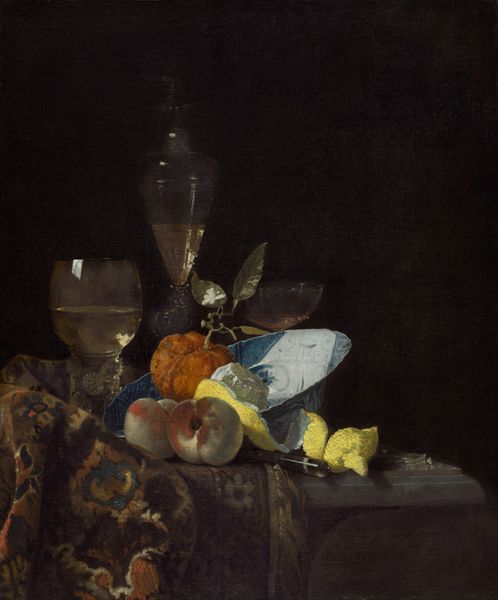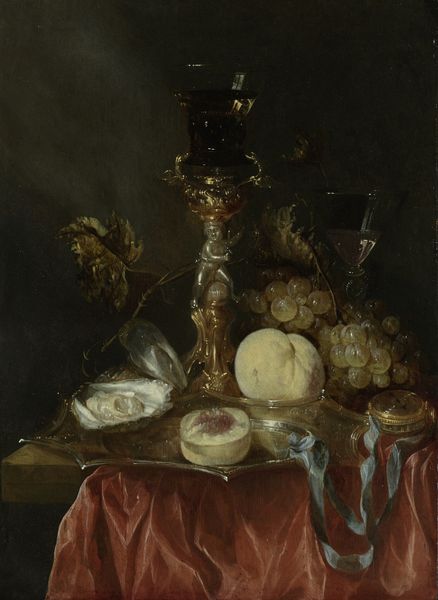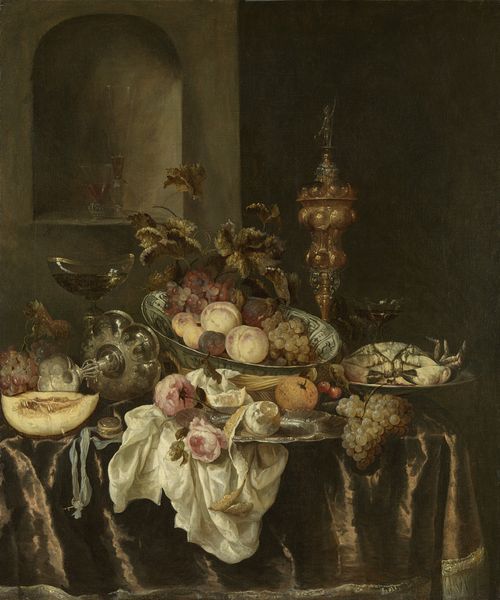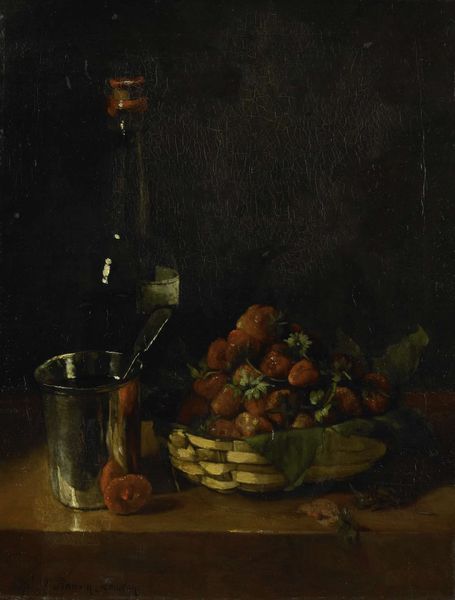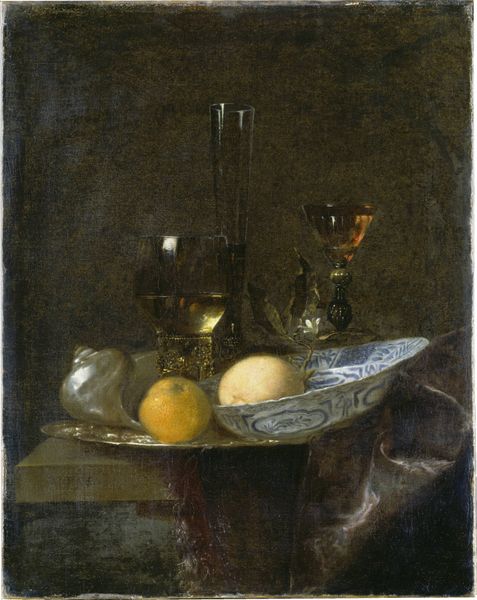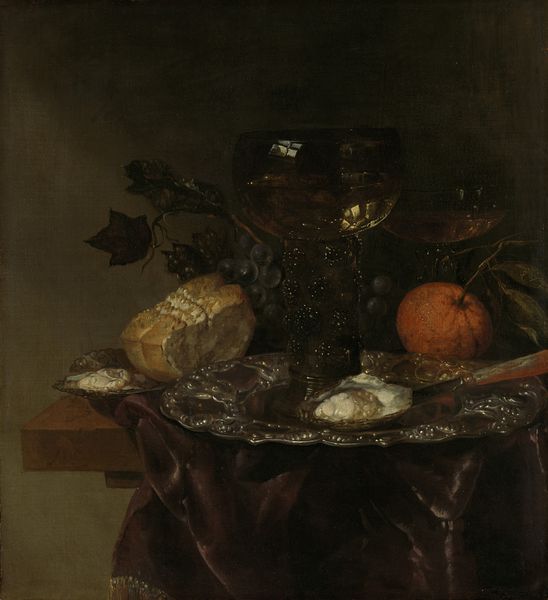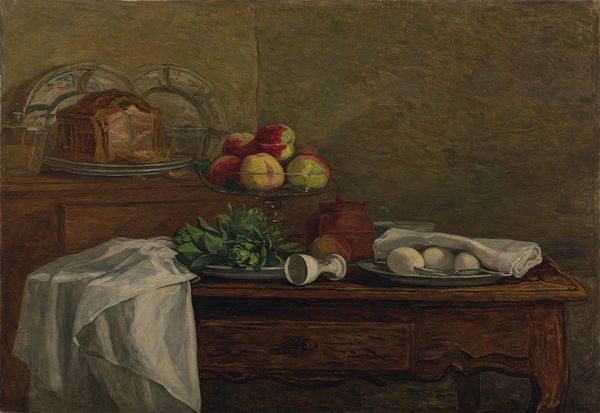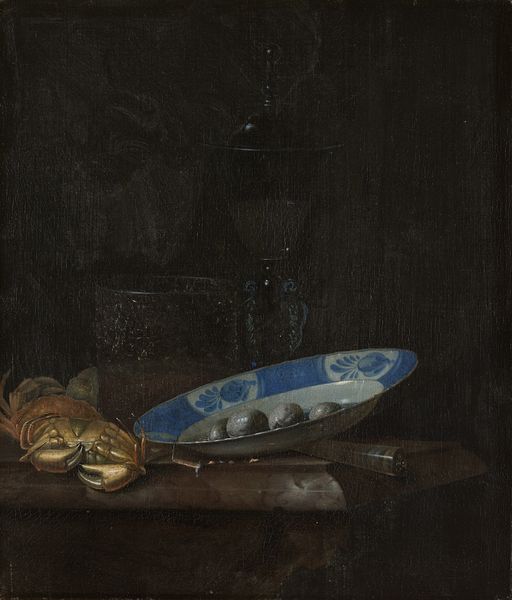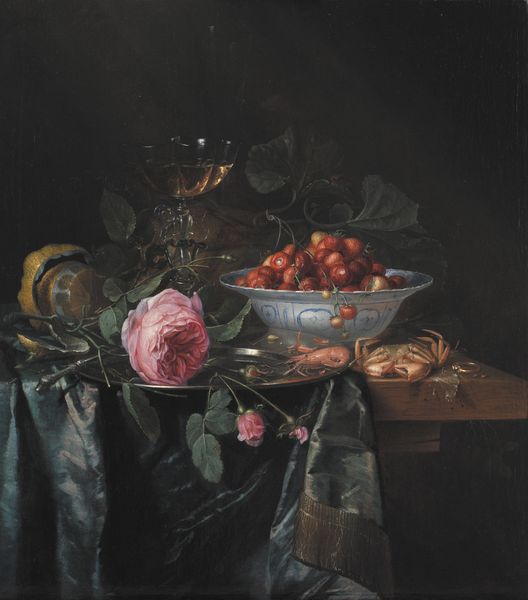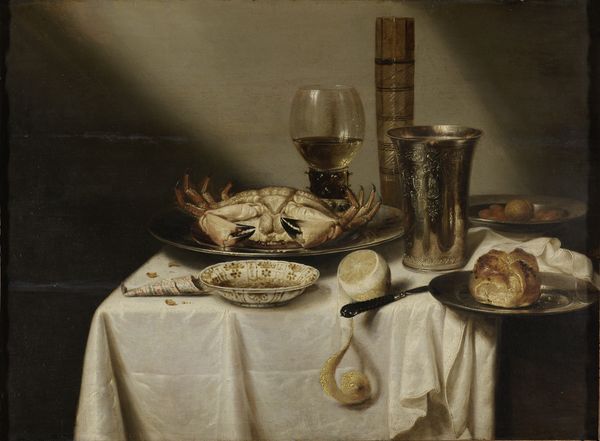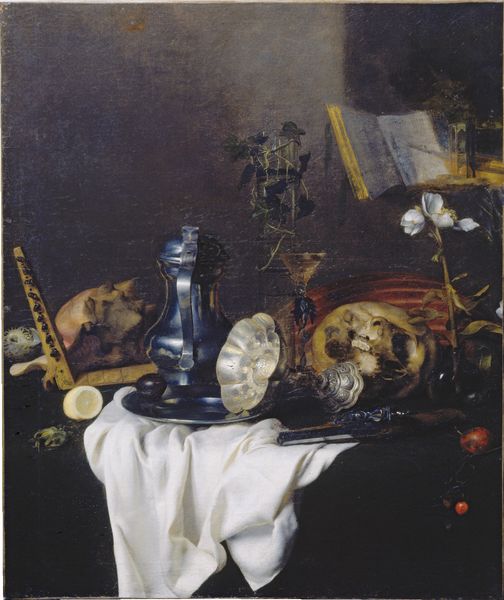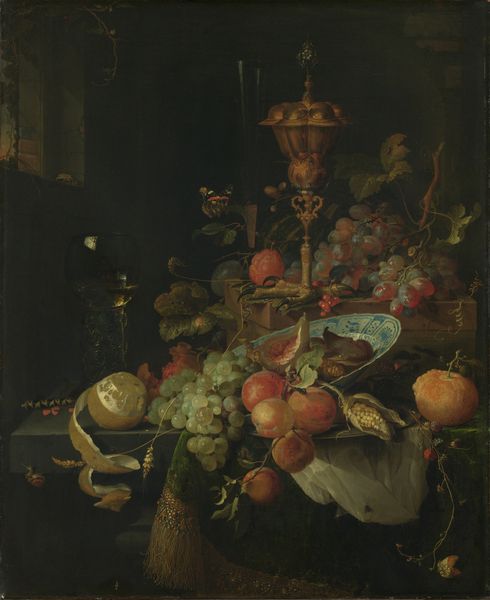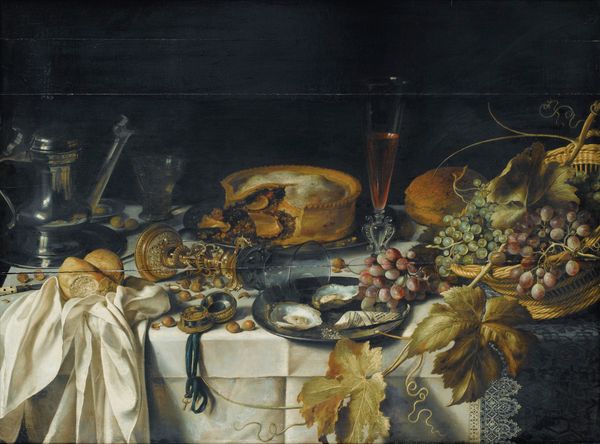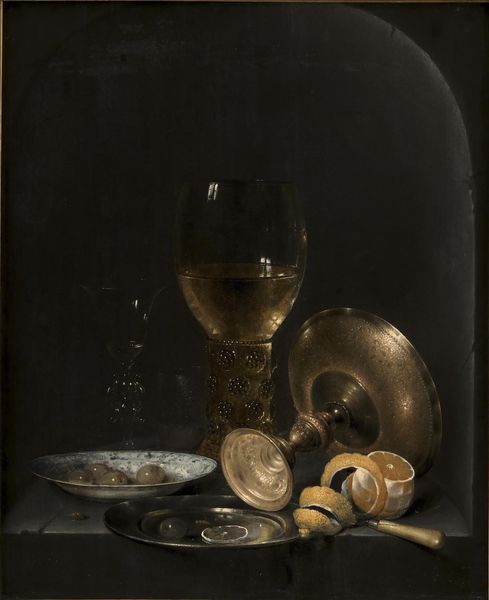
oil-paint
#
baroque
#
oil-paint
#
oil painting
#
realism
Dimensions: height 113 cm, width 94.5 cm, depth 5 cm
Copyright: Rijks Museum: Open Domain
Curator: Georg Hainz's "Still Life," believed to have been created between 1666 and 1700, presents us with a collection of carefully arranged objects rendered in oil paint. Editor: Wow, talk about mood lighting! It’s got this incredibly rich, almost theatrical darkness, like a spotlight’s about to come up on a juicy scandal. Curator: Indeed, that dramatic contrast between light and shadow is very characteristic of the Baroque style and is called chiaroscuro. The still life tradition became popular in the Netherlands during this period, as people sought more personal themes than religious scenes in artwork. If we situate that shift in the broader context of emergent mercantile and early capitalist activity in the Netherlands, then such artwork offers a perspective into newly wealthy households. Editor: Well, I’d say this scene screams "I've made it!". But it’s interesting to imagine the context that the artist was immersed in when choosing these objects. A shimmering nautilus shell, piles of fruit, ornate rugs… they’re all carefully placed status symbols, right? It’s not just any pile of fruit thrown on a table, right? Curator: Precisely. Objects such as the nautilus shell often symbolized worldly exploration, privilege, and knowledge of faraway lands, which certainly intersected with colonial projects, and exploitation, of the period. The artist isn't simply recording what he sees but curating a collection of desirable things with historical connotations and connections to broader socio-political structures. What's also striking is the detail – each piece of fruit feels uniquely textured and lit, each with their own story. Editor: Yes, and each probably cost a small fortune! It almost makes you think about accessibility – or in this case, inaccessibility, of beauty and art! There’s this amazing tension in it for me. So many exquisite details piled together on one small plane. Almost overwhelming, isn’t it? Curator: I agree, the density of symbolic references and wealth signals create an almost dizzying composition! Thank you for pointing to that. Editor: This was a feast for the eyes – and food for thought! Curator: A stimulating way to bring the history of the era into sharper focus, certainly.
Comments
No comments
Be the first to comment and join the conversation on the ultimate creative platform.
